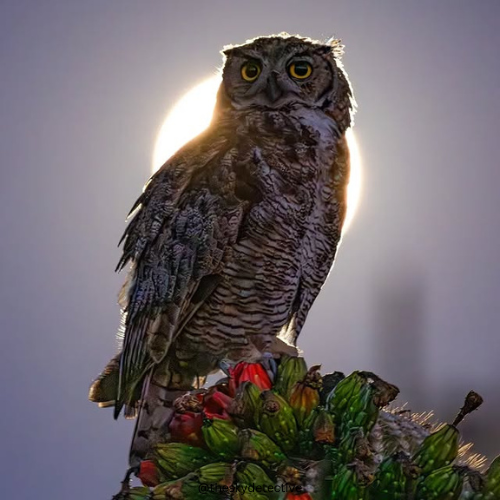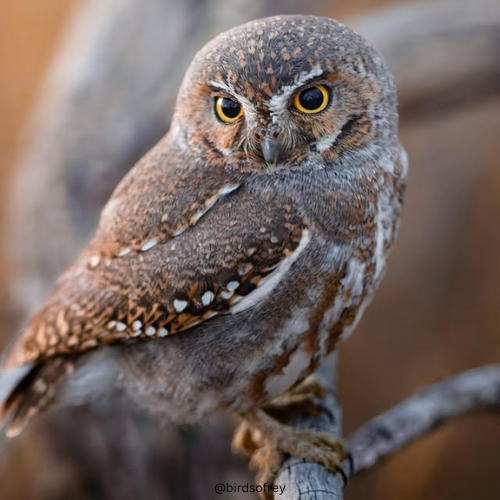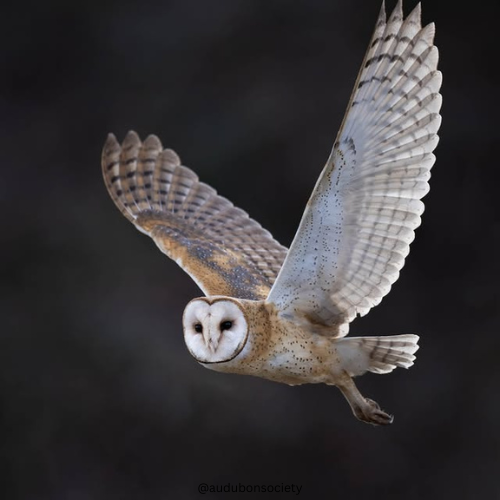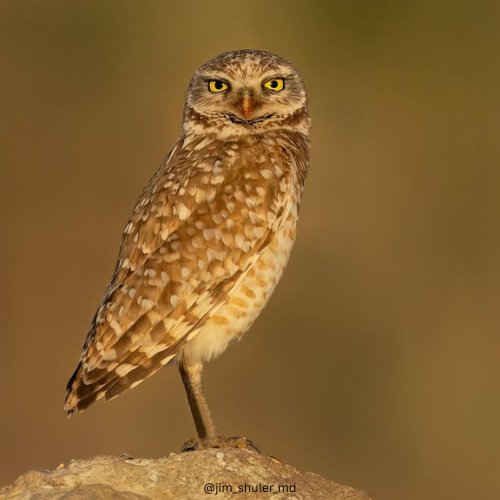
By Avian Feathers Team
Published June 2025
Arizona isn’t just home to deserts and cactus. It’s also a fantastic place for owl watching. From tiny tree-dwellers to powerful nighttime hunters, owls are tucked into forests, canyons and even city parks. Some are easy to hear but hard to see. Others might surprise you right in your backyard.
Here are 5 owls you can spot in Arizona.
1. Great Horned Owl
This is the largest and most powerful owl in Arizona. It has yellow eyes, big feather tufts that look like horns and a deep, echoing hoot. Great Horned Owls live in deserts, forests, suburbs and even on farmland. You’ll often see them perched at dusk, scanning for rabbits and mice.
Size
Length: 18–25 inches.
Wingspan: 40–57 inches.
Weight: 2–5.5 pounds.
Scientific Name: Bubo virginianus
2. Western Screech-Owl
This small owl is a master of camouflage. Its gray and brown feathers blend perfectly with tree bark. Western Screech-Owls are found in forests, desert washes and even urban areas. Their call is a soft series of bouncing notes that sound like a tiny ball dropped on pavement.
Size
Length: 7–10 inches.
Wingspan: 18–24 inches.
Weight: 3–8 ounces.
Scientific Name: Megascops kennicottii
3. Elf Owl
The Elf Owl is the smallest owl in the world. It lives in the deserts and mountain canyons of southern Arizona. This tiny bird nests in old woodpecker holes in saguaro cacti and trees. Despite its size, it has a bold voice and calls with high-pitched yips.
Size
Length: 4.9–5.7 inches.
Wingspan: 10.5–11 inches.
Weight: 1.4 ounces.
Scientific Name: Micrathene whitneyi
4. Barn Owl
With its heart-shaped face and white feathers, the Barn Owl is hard to forget. It prefers open areas and often nests in barns, silos and rocky cliffs. Unlike most owls, it doesn’t hoot. Instead, it lets out a long, eerie screech that sounds like a ghost in the night.
Size
Length: 12–16 inches.
Wingspan: 39–49 inches.
Weight: 14–24 ounces.
Scientific Name: Tyto alba
5. Burrowing Owl
This owl lives underground in open fields and desert flats. You might see one standing tall at the entrance of its burrow during the day. Burrowing Owls have long legs, bright yellow eyes and a curious stare. They are active, alert and often bob their heads when nervous.
Size
Length: 7.5–10 inches.
Wingspan: 20–24 inches.
Weight: 5–8.5 ounces.
Scientific Name: Athene cunicularia
Where to Spot Owls in Arizona
Arizona isn’t just home to deserts and cactus. It’s also a fantastic place for owl watching. From tiny tree-dwellers to powerful nighttime hunters, owls are tucked into forests, canyons, and even city parks. Here’s where to increase your chances of seeing them:
- Great Horned Owl: This large and powerful owl is very adaptable. Look for them in deserts, forests, suburbs, and even on farmland. You’ll often see them perched at dusk, scanning for prey.
- Western Screech-Owl: A master of camouflage, this small owl is found in forests, desert washes, and even urban areas. Its soft, bouncing call often reveals its presence before you see it.
- Elf Owl: The smallest owl in the world, it lives in the deserts and mountain canyons of southern Arizona. Look for it nesting in old woodpecker holes in saguaro cacti and trees.
- Barn Owl: With its distinctive face, this owl prefers open areas. It often nests in barns, silos, and rocky cliffs. Listen for its eerie screech in the night.
- Burrowing Owl: Unique among owls, this species lives underground in open fields and desert flats. You might spot one standing tall at the entrance of its burrow during the day.
Arizona’s wide range of habitats makes it a great place to spot owls.
Which one have you seen, or hope to see after dark? Let us know your favorite owl encounter.





